Search for Indicators
All Data
Indicator Gauge Icon Legend
Legend Colors
Red is bad, green is good, blue is not statistically different/neutral.
Compared to Distribution
 the value is in the best half of communities.
the value is in the best half of communities.
 the value is in the 2nd worst quarter of communities.
the value is in the 2nd worst quarter of communities.
 the value is in the worst quarter of communities.
the value is in the worst quarter of communities.
Compared to Target
 meets target;
meets target;  does not meet target.
does not meet target.
Compared to a Single Value
 lower than the comparison value;
lower than the comparison value;
 higher than the comparison value;
higher than the comparison value;
 not statistically different from comparison value.
not statistically different from comparison value.
Trend

 non-significant change over time;
non-significant change over time; 
 significant change over time;
significant change over time;  no change over time.
no change over time.
Compared to Prior Value
 higher than the previous measurement period;
higher than the previous measurement period;
 lower than the previous measurement period;
lower than the previous measurement period;
 no statistically different change from previous measurement period.
no statistically different change from previous measurement period.
State: Ohio
Health / Prevention & Safety
Value
Compared to:
46.5
Deaths per 100,000 population
(2020-2022)
Compared to:



Prior Value
(43.9)
Prior Value compares a measured value with the previously measured value. Confidence intervals were not taken into account in determining the direction of the comparison.

Trend
This comparison measures the indicator’s values over multiple time periods.<br>The Mann-Kendall Test for Statistical Significance is used to evaluate the trend<br>over 4 to 10 periods of measure, subject to data availability and comparability.
State: Ohio
Health / Respiratory Diseases
Value
Compared to:
State: Ohio Adults Who Bought Medications for Asthma
State: Ohio Adults Who Bought Medications for Asthma
6.7%
(2023)
Compared to:




US Value
(6.6%)
The regional value is compared to the national value.

Prior Value
(6.7%)
Prior Value compares a measured value with the previously measured value. Confidence intervals were not taken into account in determining the direction of the comparison.

Trend
This comparison measures the indicator’s values over multiple time periods.<br>The Mann-Kendall Test for Statistical Significance is used to evaluate the trend<br>over 4 to 10 periods of measure, subject to data availability and comparability.
42.8
Deaths per 100,000 population
(2020-2022)
Compared to:



Prior Value
(43.7)
Prior Value compares a measured value with the previously measured value. Confidence intervals were not taken into account in determining the direction of the comparison.

Trend
This comparison measures the indicator’s values over multiple time periods.<br>The Mann-Kendall Test for Statistical Significance is used to evaluate the trend<br>over 4 to 10 periods of measure, subject to data availability and comparability.
State: Ohio Asthma: Medicare Population
State: Ohio Asthma: Medicare Population
6.0%
(2022)
Compared to:
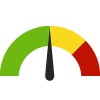




U.S. States
The distribution is based on data from 50 U.S. states and the District of Columbia.

US Value
(7.0%)
The regional value is compared to the national value.

Prior Value
(6.0%)
Prior Value compares a measured value with the previously measured value. Confidence intervals were not taken into account in determining the direction of the comparison.

Trend
This comparison measures the indicator’s values over multiple time periods.<br>The Mann-Kendall Test for Statistical Significance is used to evaluate the trend<br>over 4 to 10 periods of measure, subject to data availability and comparability.
State: Ohio COPD: Medicare Population
State: Ohio COPD: Medicare Population
12.0%
(2022)
Compared to:
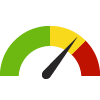




U.S. States
The distribution is based on data from 50 U.S. states and the District of Columbia.

US Value
(11.0%)
The regional value is compared to the national value.

Prior Value
(13.0%)
Prior Value compares a measured value with the previously measured value. Confidence intervals were not taken into account in determining the direction of the comparison.

Trend
This comparison measures the indicator’s values over multiple time periods.<br>The Mann-Kendall Test for Statistical Significance is used to evaluate the trend<br>over 4 to 10 periods of measure, subject to data availability and comparability.
State: Ohio
Health / Sexually Transmitted Infections
Value
Compared to:
State: Ohio Age-Adjusted Death Rate due to HIV
State: Ohio Age-Adjusted Death Rate due to HIV
0.9
Deaths per 100,000 population
(2020-2022)
Compared to:



Prior Value
(0.8)
Prior Value compares a measured value with the previously measured value. Confidence intervals were not taken into account in determining the direction of the comparison.

Trend
This comparison measures the indicator’s values over multiple time periods.<br>The Mann-Kendall Test for Statistical Significance is used to evaluate the trend<br>over 4 to 10 periods of measure, subject to data availability and comparability.
State: Ohio Chlamydia Incidence Rate
State: Ohio Chlamydia Incidence Rate
462.7
Cases per 100,000 population
(2022)
Compared to:




US Value
(495.5 in 2021)
The regional value is compared to the national value. The source for the national value is National Center for HIV/AIDS, Viral Hepatitis, STD, and TB Prevention

Prior Value
(484.1)
Prior Value compares a measured value with the previously measured value. Confidence intervals were not taken into account in determining the direction of the comparison.

Trend
This comparison measures the indicator’s values over multiple time periods.<br>The Mann-Kendall Test for Statistical Significance is used to evaluate the trend<br>over 4 to 10 periods of measure, subject to data availability and comparability.
State: Ohio Gonorrhea Incidence Rate
State: Ohio Gonorrhea Incidence Rate
195.1
Cases per 100,000 population
(2022)
Compared to:




US Value
(214.0 in 2021)
The regional value is compared to the national value. The source for the national value is National Center for HIV/AIDS, Viral Hepatitis, STD, and TB Prevention

Prior Value
(238.8)
Prior Value compares a measured value with the previously measured value. Confidence intervals were not taken into account in determining the direction of the comparison.

Trend
This comparison measures the indicator’s values over multiple time periods.<br>The Mann-Kendall Test for Statistical Significance is used to evaluate the trend<br>over 4 to 10 periods of measure, subject to data availability and comparability.
State: Ohio HIV/AIDS Prevalence Rate
State: Ohio HIV/AIDS Prevalence Rate
216.2
Cases per 100,000 population
(2022)
Compared to:



Prior Value
(217.0)
Prior Value compares a measured value with the previously measured value. Confidence intervals were not taken into account in determining the direction of the comparison.

Trend
This comparison measures the indicator’s values over multiple time periods.<br>The Mann-Kendall Test for Statistical Significance is used to evaluate the trend<br>over 4 to 10 periods of measure, subject to data availability and comparability.
State: Ohio
Health / Tobacco Use
Value
Compared to:
State: Ohio Adults Who Bought Medications to Quit Smoking
State: Ohio Adults Who Bought Medications to Quit Smoking
1.4%
(2023)
Compared to:




US Value
(1.4%)
The regional value is compared to the national value.

Prior Value
(1.4%)
Prior Value compares a measured value with the previously measured value. Confidence intervals were not taken into account in determining the direction of the comparison.

Trend
This comparison measures the indicator’s values over multiple time periods.<br>The Mann-Kendall Test for Statistical Significance is used to evaluate the trend<br>over 4 to 10 periods of measure, subject to data availability and comparability.
6.0%
(2023)
Compared to:



U.S. States
The distribution is based on data from 50 U.S. states and the District of Columbia.

US Value
(5.9%)
The regional value is compared to the national value.
State: Ohio Adults Who Used Smokeless Tobacco: Past 30 Days
State: Ohio Adults Who Used Smokeless Tobacco: Past 30 Days
1.9%
(2023)
Compared to:
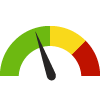




U.S. States
The distribution is based on data from 50 U.S. states and the District of Columbia.

US Value
(1.7%)
The regional value is compared to the national value.

Prior Value
(1.8%)
Prior Value compares a measured value with the previously measured value. Confidence intervals were not taken into account in determining the direction of the comparison.

Trend
This comparison measures the indicator’s values over multiple time periods.<br>The Mann-Kendall Test for Statistical Significance is used to evaluate the trend<br>over 4 to 10 periods of measure, subject to data availability and comparability.
State: Ohio Cigarette Spending-to-Income Ratio
State: Ohio Cigarette Spending-to-Income Ratio
2.3%
(2023)
Compared to:



U.S. States
The distribution is based on data from 50 U.S. states and the District of Columbia.

Prior Value
(2.3%)
Prior Value compares a measured value with the previously measured value. Confidence intervals were not taken into account in determining the direction of the comparison.
State: Ohio Teens who Smoke Cigarettes: High School Students
State: Ohio Teens who Smoke Cigarettes: High School Students
3.3%
(2021)
Compared to:
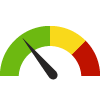



U.S. States
The distribution is based on data from 43 U.S. states and the District of Columbia.

US Value
(3.8%)
The regional value is compared to the national value.

Prior Value
(4.9%)
Prior Value compares a measured value with the previously measured value. Confidence intervals were taken into account in determining the direction of the comparison.
State: Ohio Tobacco Use: Medicare Population
State: Ohio Tobacco Use: Medicare Population
7.0%
(2022)
Compared to:




US Value
(6.0%)
The regional value is compared to the national value.

Prior Value
(7.0%)
Prior Value compares a measured value with the previously measured value. Confidence intervals were not taken into account in determining the direction of the comparison.

Trend
This comparison measures the indicator’s values over multiple time periods.<br>The Mann-Kendall Test for Statistical Significance is used to evaluate the trend<br>over 4 to 10 periods of measure, subject to data availability and comparability.
State: Ohio
Health / Weight Status
Value
Compared to:
State: Ohio Obesity: Medicare Population
State: Ohio Obesity: Medicare Population
24.0%
(2022)
Compared to:




US Value
(19.0%)
The regional value is compared to the national value.

Prior Value
(23.0%)
Prior Value compares a measured value with the previously measured value. Confidence intervals were not taken into account in determining the direction of the comparison.

Trend
This comparison measures the indicator’s values over multiple time periods.<br>The Mann-Kendall Test for Statistical Significance is used to evaluate the trend<br>over 4 to 10 periods of measure, subject to data availability and comparability.
State: Ohio Teens who are Obese: High School Students
State: Ohio Teens who are Obese: High School Students
18.8%
(2021)
Compared to:
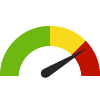



U.S. States
The distribution is based on data from 44 U.S. states and the District of Columbia.

US Value
(16.3%)
The regional value is compared to the national value.

Prior Value
(16.8%)
Prior Value compares a measured value with the previously measured value. Confidence intervals were taken into account in determining the direction of the comparison.
State: Ohio Teens who are Overweight
State: Ohio Teens who are Overweight
13.4%
(2021)
Compared to:




U.S. States
The distribution is based on data from 44 U.S. states and the District of Columbia.

US Value
(16.0%)
The regional value is compared to the national value.

Prior Value
(12.2%)
Prior Value compares a measured value with the previously measured value. Confidence intervals were taken into account in determining the direction of the comparison.
State: Ohio Teens who are Overweight or Obese
State: Ohio Teens who are Overweight or Obese
32.2%
(2021)
Compared to:




U.S. States
The distribution is based on data from 44 U.S. states and the District of Columbia.

US Value
(32.3%)
The regional value is compared to the national value.

Prior Value
(29.0%)
Prior Value compares a measured value with the previously measured value. Confidence intervals were not taken into account in determining the direction of the comparison.
State: Ohio
Health / Wellness & Lifestyle
Value
Compared to:
69.2%
(2023)
Compared to:




U.S. States
The distribution is based on data from 50 U.S. states and the District of Columbia.

US Value
(70.1%)
The regional value is compared to the national value.

Prior Value
(74.8%)
Prior Value compares a measured value with the previously measured value. Confidence intervals were not taken into account in determining the direction of the comparison.
State: Ohio Frequent Physical Distress
State: Ohio Frequent Physical Distress
13.0%
(2019)
Compared to:




U.S. States
The distribution is based on data from 49 U.S. states and the District of Columbia.

US Value
(12.0%)
The regional value is compared to the national value.

Prior Value
(12.4%)
Prior Value compares a measured value with the previously measured value. Confidence intervals were taken into account in determining the direction of the comparison.
State: Ohio Insufficient Sleep
State: Ohio Insufficient Sleep
36.5%
(2020)
Compared to:





U.S. States
The distribution is based on data from 50 U.S. states and the District of Columbia.

US Value
(33.0%)
The regional value is compared to the national value.

Prior Value
(40.6%)
Prior Value compares a measured value with the previously measured value. Confidence intervals were not taken into account in determining the direction of the comparison.

HP 2030 Target
(26.7%)
State: Ohio Poor Physical Health: Average Number of Days
State: Ohio Poor Physical Health: Average Number of Days
3.6
Days
(2021)
Compared to:





U.S. States
The distribution is based on data from 50 U.S. states and the District of Columbia.

US Value
(3.3)
The regional value is compared to the national value.

Prior Value
(3.2)
Prior Value compares a measured value with the previously measured value. Confidence intervals were taken into account in determining the direction of the comparison.

Trend
This comparison measures the indicator’s values over multiple time periods.<br>The Mann-Kendall Test for Statistical Significance is used to evaluate the trend<br>over 4 to 10 periods of measure, subject to data availability and comparability.
84.6%
(2023)
Compared to:





U.S. States
The distribution is based on data from 50 U.S. states and the District of Columbia.

US Value
(85.4%)
The regional value is compared to the national value.

Prior Value
(85.1%)
Prior Value compares a measured value with the previously measured value. Confidence intervals were not taken into account in determining the direction of the comparison.

Trend
This comparison measures the indicator’s values over multiple time periods.<br>The Mann-Kendall Test for Statistical Significance is used to evaluate the trend<br>over 4 to 10 periods of measure, subject to data availability and comparability.
State: Ohio
Health / Women's Health
Value
Compared to:
State: Ohio Adults Who Visited an OB/GYN
State: Ohio Adults Who Visited an OB/GYN
15.2%
(2023)
Compared to:




US Value
(15.7%)
The regional value is compared to the national value.

Prior Value
(14.9%)
Prior Value compares a measured value with the previously measured value. Confidence intervals were not taken into account in determining the direction of the comparison.

Trend
This comparison measures the indicator’s values over multiple time periods.<br>The Mann-Kendall Test for Statistical Significance is used to evaluate the trend<br>over 4 to 10 periods of measure, subject to data availability and comparability.
State: Ohio
Community / Civic Engagement
Value
Compared to:
State: Ohio Voter Turnout: Presidential Election
State: Ohio Voter Turnout: Presidential Election
74.0%
(2020)
Compared to:




Prior Value
(71.3%)
Prior Value compares a measured value with the previously measured value. Confidence intervals were not taken into account in determining the direction of the comparison.

Trend
This comparison measures the indicator’s values over multiple time periods.<br>The Mann-Kendall Test for Statistical Significance is used to evaluate the trend<br>over 4 to 10 periods of measure, subject to data availability and comparability.

HP 2030 Target
(58.4%)
<div>SDOH-07: Increase the proportion of the voting-age citizens who vote</div>
State: Ohio
Community / Crime & Crime Prevention
Value
Compared to:
State: Ohio Age-Adjusted Death Rate due to Homicide
State: Ohio Age-Adjusted Death Rate due to Homicide
9.0
Deaths per 100,000 population
(2020-2022)
Compared to:




Prior Value
(8.4)
Prior Value compares a measured value with the previously measured value. Confidence intervals were not taken into account in determining the direction of the comparison.

Trend
This comparison measures the indicator’s values over multiple time periods.<br>The Mann-Kendall Test for Statistical Significance is used to evaluate the trend<br>over 4 to 10 periods of measure, subject to data availability and comparability.

HP 2030 Target
(5.5)
<div>IVP-09: Reduce homicides <strong>(LEADING HEALTH INDICATOR)</strong></div>
State: Ohio Violent Crime Rate
State: Ohio Violent Crime Rate
359.0
Crimes per 100,000 population
(2023)
Compared to:




US Value
(380.7 in 2022)
The regional value is compared to the national value. The source for the national value is Federal Bureau of Investigation

Prior Value
(361.6)
Prior Value compares a measured value with the previously measured value. Confidence intervals were not taken into account in determining the direction of the comparison.

Trend
This comparison measures the indicator’s values over multiple time periods.<br>The Mann-Kendall Test for Statistical Significance is used to evaluate the trend<br>over 4 to 10 periods of measure, subject to data availability and comparability.
State: Ohio
Community / Demographics
Value
Compared to:
State: Ohio Average Household Size
State: Ohio Average Household Size
2.40
Persons per household
(2018-2022)
Compared to:



US Value
(2.60)
The regional value is compared to the national value.

Trend
This comparison measures the indicator’s values over multiple time periods.<br>The Mann-Kendall Test for Statistical Significance is used to evaluate the trend<br>over 4 to 10 periods of measure, subject to data availability and comparability.
State: Ohio Foreign Born Persons
State: Ohio Foreign Born Persons
4.9%
(2018-2022)
Compared to:



US Value
(13.7%)
The regional value is compared to the national value.

Trend
This comparison measures the indicator’s values over multiple time periods.<br>The Mann-Kendall Test for Statistical Significance is used to evaluate the trend<br>over 4 to 10 periods of measure, subject to data availability and comparability.
53.9%
(2018-2022)
Compared to:


Trend
This comparison measures the indicator’s values over multiple time periods.<br>The Mann-Kendall Test for Statistical Significance is used to evaluate the trend<br>over 4 to 10 periods of measure, subject to data availability and comparability.
7.5%
(2018-2022)
Compared to:



US Value
(21.7%)
The regional value is compared to the national value.

Trend
This comparison measures the indicator’s values over multiple time periods.<br>The Mann-Kendall Test for Statistical Significance is used to evaluate the trend<br>over 4 to 10 periods of measure, subject to data availability and comparability.
State: Ohio Population Over Age 65 (Count)
State: Ohio Population Over Age 65 (Count)
2,068,562
People
(2018-2022)
Compared to:


Trend
This comparison measures the indicator’s values over multiple time periods.<br>The Mann-Kendall Test for Statistical Significance is used to evaluate the trend<br>over 4 to 10 periods of measure, subject to data availability and comparability.
State: Ohio Residential Segregation - Black/White
State: Ohio Residential Segregation - Black/White
69.5
Score
(2024)
Compared to:





U.S. States
The distribution is based on data from 50 U.S. states and the District of Columbia.

US Value
(62.7)
The regional value is compared to the national value.

Prior Value
(69.6)
Prior Value compares a measured value with the previously measured value. Confidence intervals were not taken into account in determining the direction of the comparison.

Trend
This comparison measures the indicator’s values over multiple time periods.<br>The Mann-Kendall Test for Statistical Significance is used to evaluate the trend<br>over 4 to 10 periods of measure, subject to data availability and comparability.
State: Ohio Veteran Population
State: Ohio Veteran Population
7.0%
(2018-2022)
Compared to:



US Value
(6.6%)
The regional value is compared to the national value.

Trend
This comparison measures the indicator’s values over multiple time periods.<br>The Mann-Kendall Test for Statistical Significance is used to evaluate the trend<br>over 4 to 10 periods of measure, subject to data availability and comparability.
State: Ohio
Community / Public Safety
Value
Compared to:
2.7
Deaths per 100,000 population
(2016-2020)
Compared to:




US Value
(2.6)
The regional value is compared to the national value.

Prior Value
(2.8)
Prior Value compares a measured value with the previously measured value. Confidence intervals were taken into account in determining the direction of the comparison.

Trend
This comparison measures the indicator’s values over multiple time periods.<br>The Mann-Kendall Test for Statistical Significance is used to evaluate the trend<br>over 4 to 10 periods of measure, subject to data availability and comparability.
State: Ohio Alcohol-Impaired Driving Deaths
State: Ohio Alcohol-Impaired Driving Deaths
32.2%
Percent of driving deaths with alcohol involvement
(2017-2021)
Compared to:





U.S. States
The distribution is based on data from 50 U.S. states and the District of Columbia.

US Value
(26.3%)
The regional value is compared to the national value.

Prior Value
(32.5%)
Prior Value compares a measured value with the previously measured value. Confidence intervals were taken into account in determining the direction of the comparison.

Trend
This comparison measures the indicator’s values over multiple time periods.<br>The Mann-Kendall Test for Statistical Significance is used to evaluate the trend<br>over 4 to 10 periods of measure, subject to data availability and comparability.
State: Ohio
Community / Social Environment
Value
Compared to:
State: Ohio Children in Single-Parent Households
State: Ohio Children in Single-Parent Households
26.4%
(2018-2022)
Compared to:




U.S. States
The distribution is based on data from 50 U.S. states and the District of Columbia.

US Value
(24.9%)
The regional value is compared to the national value.

Trend
This comparison measures the indicator’s values over multiple time periods.<br>The Mann-Kendall Test for Statistical Significance is used to evaluate the trend<br>over 4 to 10 periods of measure, subject to data availability and comparability.
42.2%
(2018-2022)
Compared to:



US Value
(32.4%)
The regional value is compared to the national value.

Trend
This comparison measures the indicator’s values over multiple time periods.<br>The Mann-Kendall Test for Statistical Significance is used to evaluate the trend<br>over 4 to 10 periods of measure, subject to data availability and comparability.
State: Ohio Linguistic Isolation
State: Ohio Linguistic Isolation
1.4%
(2018-2022)
Compared to:




U.S. States
The distribution is based on data from 50 U.S. states and the District of Columbia.

US Value
(4.2%)
The regional value is compared to the national value.

Trend
This comparison measures the indicator’s values over multiple time periods.<br>The Mann-Kendall Test for Statistical Significance is used to evaluate the trend<br>over 4 to 10 periods of measure, subject to data availability and comparability.
State: Ohio People 65+ Living Alone
State: Ohio People 65+ Living Alone
29.8%
(2018-2022)
Compared to:
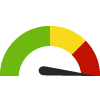



U.S. States
The distribution is based on data from 50 U.S. states and the District of Columbia.

US Value
(26.4%)
The regional value is compared to the national value.

Trend
This comparison measures the indicator’s values over multiple time periods.<br>The Mann-Kendall Test for Statistical Significance is used to evaluate the trend<br>over 4 to 10 periods of measure, subject to data availability and comparability.
State: Ohio People 65+ Living Alone (Count)
State: Ohio People 65+ Living Alone (Count)
616,976
People
(2018-2022)
Compared to:


Trend
This comparison measures the indicator’s values over multiple time periods.<br>The Mann-Kendall Test for Statistical Significance is used to evaluate the trend<br>over 4 to 10 periods of measure, subject to data availability and comparability.
State: Ohio Social Associations
State: Ohio Social Associations
10.7
Membership associations per 10,000 population
(2021)
Compared to:





U.S. States
The distribution is based on data from 50 U.S. states and the District of Columbia.

US Value
(9.1)
The regional value is compared to the national value.

Prior Value
(10.8)
Prior Value compares a measured value with the previously measured value. Confidence intervals were not taken into account in determining the direction of the comparison.

Trend
This comparison measures the indicator’s values over multiple time periods.<br>The Mann-Kendall Test for Statistical Significance is used to evaluate the trend<br>over 4 to 10 periods of measure, subject to data availability and comparability.
State: Ohio Substantiated Child Abuse Rate
State: Ohio Substantiated Child Abuse Rate
6.9
Cases per 1,000 children
(2021)
Compared to:




Prior Value
(6.8)
Prior Value compares a measured value with the previously measured value. Confidence intervals were not taken into account in determining the direction of the comparison.

Trend
This comparison measures the indicator’s values over multiple time periods.<br>The Mann-Kendall Test for Statistical Significance is used to evaluate the trend<br>over 4 to 10 periods of measure, subject to data availability and comparability.

HP 2030 Target
(8.7)
State: Ohio
Community / Transportation
Value
Compared to:
State: Ohio Community Spending on Transportation
State: Ohio Community Spending on Transportation
17.5%
(2023)
Compared to:



US Value
(17.4%)
The regional value is compared to the national value.

Prior Value
(17.5%)
Prior Value compares a measured value with the previously measured value. Confidence intervals were not taken into account in determining the direction of the comparison.
3.5%
(2023)
Compared to:



U.S. States
The distribution is based on data from 50 U.S. states and the District of Columbia.

Prior Value
(3.6%)
Prior Value compares a measured value with the previously measured value. Confidence intervals were not taken into account in determining the direction of the comparison.
State: Ohio Households without a Vehicle
State: Ohio Households without a Vehicle
7.4%
(2018-2022)
Compared to:




U.S. States
The distribution is based on data from 50 U.S. states and the District of Columbia.

US Value
(8.3%)
The regional value is compared to the national value.

Trend
This comparison measures the indicator’s values over multiple time periods.<br>The Mann-Kendall Test for Statistical Significance is used to evaluate the trend<br>over 4 to 10 periods of measure, subject to data availability and comparability.
State: Ohio Mean Travel Time to Work
State: Ohio Mean Travel Time to Work
23.6
Minutes
(2018-2022)
Compared to:
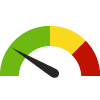



U.S. States
The distribution is based on data from 50 U.S. states and the District of Columbia.

US Value
(26.7)
The regional value is compared to the national value.

Trend
This comparison measures the indicator’s values over multiple time periods.<br>The Mann-Kendall Test for Statistical Significance is used to evaluate the trend<br>over 4 to 10 periods of measure, subject to data availability and comparability.
State: Ohio Solo Drivers with a Long Commute
State: Ohio Solo Drivers with a Long Commute
30.6%
(2018-2022)
Compared to:





U.S. States
The distribution is based on data from 50 U.S. states and the District of Columbia.

US Value
(36.4%)
The regional value is compared to the national value.

Prior Value
(30.7%)
Prior Value compares a measured value with the previously measured value. Confidence intervals were taken into account in determining the direction of the comparison.

Trend
This comparison measures the indicator’s values over multiple time periods.<br>The Mann-Kendall Test for Statistical Significance is used to evaluate the trend<br>over 4 to 10 periods of measure, subject to data availability and comparability.
State: Ohio Workers Commuting by Public Transportation
State: Ohio Workers Commuting by Public Transportation
1.2%
(2018-2022)
Compared to:





U.S. States
The distribution is based on data from 50 U.S. states and the District of Columbia.

US Value
(3.8%)
The regional value is compared to the national value.

Trend
This comparison measures the indicator’s values over multiple time periods.<br>The Mann-Kendall Test for Statistical Significance is used to evaluate the trend<br>over 4 to 10 periods of measure, subject to data availability and comparability.

HP 2030 Target
(5.3%)
State: Ohio Workers who Drive Alone to Work
State: Ohio Workers who Drive Alone to Work
78.1%
(2018-2022)
Compared to:




U.S. States
The distribution is based on data from 50 U.S. states and the District of Columbia.

US Value
(71.7%)
The regional value is compared to the national value.

Trend
This comparison measures the indicator’s values over multiple time periods.<br>The Mann-Kendall Test for Statistical Significance is used to evaluate the trend<br>over 4 to 10 periods of measure, subject to data availability and comparability.
State: Ohio Workers who Walk to Work
State: Ohio Workers who Walk to Work
2.0%
(2018-2022)
Compared to:




U.S. States
The distribution is based on data from 50 U.S. states and the District of Columbia.

US Value
(2.4%)
The regional value is compared to the national value.

Trend
This comparison measures the indicator’s values over multiple time periods.<br>The Mann-Kendall Test for Statistical Significance is used to evaluate the trend<br>over 4 to 10 periods of measure, subject to data availability and comparability.
State: Ohio
Economy / Employment
Value
Compared to:
State: Ohio Employer Establishments
State: Ohio Employer Establishments
249,857
Number of Establishments
(2020)
Compared to:


Prior Value
(250,981)
Prior Value compares a measured value with the previously measured value. Confidence intervals were not taken into account in determining the direction of the comparison.
State: Ohio Female Population 16+ in Civilian Labor Force
State: Ohio Female Population 16+ in Civilian Labor Force
58.9%
(2018-2022)
Compared to:




U.S. States
The distribution is based on data from 50 U.S. states and the District of Columbia.

US Value
(58.5%)
The regional value is compared to the national value.

Trend
This comparison measures the indicator’s values over multiple time periods.<br>The Mann-Kendall Test for Statistical Significance is used to evaluate the trend<br>over 4 to 10 periods of measure, subject to data availability and comparability.
State: Ohio Population 16+ in Civilian Labor Force
State: Ohio Population 16+ in Civilian Labor Force
59.9%
(2018-2022)
Compared to:




U.S. States
The distribution is based on data from 50 U.S. states and the District of Columbia.

US Value
(59.6%)
The regional value is compared to the national value.

Trend
This comparison measures the indicator’s values over multiple time periods.<br>The Mann-Kendall Test for Statistical Significance is used to evaluate the trend<br>over 4 to 10 periods of measure, subject to data availability and comparability.
State: Ohio Size of Labor Force
State: Ohio Size of Labor Force
5,736,985
Persons
(January 2024)
Compared to:



Prior Value
(5,739,180)
Prior Value compares a measured value with the previously measured value. Confidence intervals were not taken into account in determining the direction of the comparison.

Trend
This comparison measures the indicator’s values over multiple time periods.<br>The Mann-Kendall Test for Statistical Significance is used to evaluate the trend<br>over 4 to 10 periods of measure, subject to data availability and comparability.
State: Ohio Total Employment
State: Ohio Total Employment
4,822,238
Paid Employees
(2021)
Compared to:



Prior Value
(4,978,720)
Prior Value compares a measured value with the previously measured value. Confidence intervals were not taken into account in determining the direction of the comparison.

Trend
This comparison measures the indicator’s values over multiple time periods.<br>The Mann-Kendall Test for Statistical Significance is used to evaluate the trend<br>over 4 to 10 periods of measure, subject to data availability and comparability.
State: Ohio Total Employment Change
State: Ohio Total Employment Change
-3.1%
(2020-2021)
Compared to:





U.S. States
The distribution is based on data from 50 U.S. states and the District of Columbia.

US Value
(-4.3%)
The regional value is compared to the national value.

Prior Value
(1.3%)
Prior Value compares a measured value with the previously measured value. Confidence intervals were not taken into account in determining the direction of the comparison.

Trend
This comparison measures the indicator’s values over multiple time periods.<br>The Mann-Kendall Test for Statistical Significance is used to evaluate the trend<br>over 4 to 10 periods of measure, subject to data availability and comparability.
State: Ohio Unemployed Workers in Civilian Labor Force
State: Ohio Unemployed Workers in Civilian Labor Force
4.2%
(January 2024)
Compared to:





U.S. States
The distribution is based on non-seasonally-adjusted data from 50 U.S. states and the District of Columbia.

US Value
(4.1%)
The regional value is compared to the national value.

Prior Value
(3.1%)
Prior Value compares a measured value with the previously measured value. Confidence intervals were not taken into account in determining the direction of the comparison.

Trend
This comparison measures the indicator’s values over multiple time periods.<br>The Mann-Kendall Test for Statistical Significance is used to evaluate the trend<br>over 4 to 10 periods of measure, subject to data availability and comparability.
State: Ohio
Economy / Food Insecurity
Value
Compared to:
State: Ohio Child Food Insecurity Rate
State: Ohio Child Food Insecurity Rate
14.8%
(2021)
Compared to:





U.S. States
The distribution is based on data from 50 U.S. states and the District of Columbia.

US Value
(12.8%)
The regional value is compared to the national value.

Prior Value
(15.9%)
Prior Value compares a measured value with the previously measured value. Confidence intervals were not taken into account in determining the direction of the comparison.

Trend
This comparison measures the indicator’s values over multiple time periods.<br>The Mann-Kendall Test for Statistical Significance is used to evaluate the trend<br>over 4 to 10 periods of measure, subject to data availability and comparability.
State: Ohio Community Spending on Food
State: Ohio Community Spending on Food
12.7%
(2023)
Compared to:



US Value
(12.6%)
The regional value is compared to the national value.

Prior Value
(12.7%)
Prior Value compares a measured value with the previously measured value. Confidence intervals were not taken into account in determining the direction of the comparison.
State: Ohio Food Insecurity Rate
State: Ohio Food Insecurity Rate
11.8%
(2021)
Compared to:





U.S. States
The distribution is based on data from 50 U.S. states and the District of Columbia.

US Value
(10.4%)
The regional value is compared to the national value.

Prior Value
(11.6%)
Prior Value compares a measured value with the previously measured value. Confidence intervals were not taken into account in determining the direction of the comparison.

Trend
This comparison measures the indicator’s values over multiple time periods.<br>The Mann-Kendall Test for Statistical Significance is used to evaluate the trend<br>over 4 to 10 periods of measure, subject to data availability and comparability.
State: Ohio Households Receiving SNAP with Children
State: Ohio Households Receiving SNAP with Children
45.1%
(2018-2022)
Compared to:



US Value
(47.9%)
The regional value is compared to the national value.

Trend
This comparison measures the indicator’s values over multiple time periods.<br>The Mann-Kendall Test for Statistical Significance is used to evaluate the trend<br>over 4 to 10 periods of measure, subject to data availability and comparability.
State: Ohio Households Receiving SNAP with Children (Count)
State: Ohio Households Receiving SNAP with Children (Count)
264,445
Households
(2018-2022)
Compared to:


Trend
This comparison measures the indicator’s values over multiple time periods.<br>The Mann-Kendall Test for Statistical Significance is used to evaluate the trend<br>over 4 to 10 periods of measure, subject to data availability and comparability.
State: Ohio Projected Child Food Insecurity Rate
State: Ohio Projected Child Food Insecurity Rate
18.5%
(2021)
Compared to:


U.S. States
The distribution is based on data from 50 U.S. states and the District of Columbia.
State: Ohio Projected Food Insecurity Rate
State: Ohio Projected Food Insecurity Rate
14.1%
(2021)
Compared to:


U.S. States
The distribution is based on data from 50 U.S. states and the District of Columbia.
State: Ohio Students Eligible for the Free Lunch Program
State: Ohio Students Eligible for the Free Lunch Program
19.1%
(2022-2023)
Compared to:





U.S. States
The distribution is based on data from 43 U.S. states.

US Value
(42.8%)
The regional value is compared to the national value.

Prior Value
(20.2%)
Prior Value compares a measured value with the previously measured value. Confidence intervals were not taken into account in determining the direction of the comparison.

Trend
This comparison measures the indicator’s values over multiple time periods.<br>The Mann-Kendall Test for Statistical Significance is used to evaluate the trend<br>over 4 to 10 periods of measure, subject to data availability and comparability.
State: Ohio
Economy / Government Assistance
Value
Compared to:
State: Ohio Households with Cash Public Assistance Income
State: Ohio Households with Cash Public Assistance Income
2.6%
(2018-2022)
Compared to:




U.S. States
The distribution is based on data from 50 U.S. states and the District of Columbia.

US Value
(2.7%)
The regional value is compared to the national value.

Trend
This comparison measures the indicator’s values over multiple time periods.<br>The Mann-Kendall Test for Statistical Significance is used to evaluate the trend<br>over 4 to 10 periods of measure, subject to data availability and comparability.
State: Ohio
Economy / Housing & Homes
Value
Compared to:
State: Ohio Community Spending on Housing
State: Ohio Community Spending on Housing
31.7%
(2023)
Compared to:



US Value
(32.1%)
The regional value is compared to the national value.

Prior Value
(31.7%)
Prior Value compares a measured value with the previously measured value. Confidence intervals were not taken into account in determining the direction of the comparison.
State: Ohio Home Renter Spending-to-Income Ratio
State: Ohio Home Renter Spending-to-Income Ratio
17.4%
(2023)
Compared to:



U.S. States
The distribution is based on data from 50 U.S. states and the District of Columbia.

Prior Value
(17.6%)
Prior Value compares a measured value with the previously measured value. Confidence intervals were not taken into account in determining the direction of the comparison.
State: Ohio Homeowner Spending-to-Income Ratio
State: Ohio Homeowner Spending-to-Income Ratio
15.1%
(2023)
Compared to:



U.S. States
The distribution is based on data from 50 U.S. states and the District of Columbia.

Prior Value
(15.4%)
Prior Value compares a measured value with the previously measured value. Confidence intervals were not taken into account in determining the direction of the comparison.
State: Ohio Homeowner Vacancy Rate
State: Ohio Homeowner Vacancy Rate
0.9%
(2018-2022)
Compared to:




U.S. States
The distribution is based on data from 50 U.S. states and the District of Columbia.

US Value
(1.1%)
The regional value is compared to the national value.

Trend
This comparison measures the indicator’s values over multiple time periods.<br>The Mann-Kendall Test for Statistical Significance is used to evaluate the trend<br>over 4 to 10 periods of measure, subject to data availability and comparability.
State: Ohio Homeownership
State: Ohio Homeownership
60.9%
(2018-2022)
Compared to:




U.S. States
The distribution is based on data from 50 U.S. states and the District of Columbia.

US Value
(57.8%)
The regional value is compared to the national value.

Trend
This comparison measures the indicator’s values over multiple time periods.<br>The Mann-Kendall Test for Statistical Significance is used to evaluate the trend<br>over 4 to 10 periods of measure, subject to data availability and comparability.
State: Ohio Median Household Gross Rent
State: Ohio Median Household Gross Rent
$945
(2018-2022)
Compared to:



US Value
($1,268)
The regional value is compared to the national value.

Trend
This comparison measures the indicator’s values over multiple time periods.<br>The Mann-Kendall Test for Statistical Significance is used to evaluate the trend<br>over 4 to 10 periods of measure, subject to data availability and comparability.
$548
(2018-2022)
Compared to:



US Value
($584)
The regional value is compared to the national value.

Trend
This comparison measures the indicator’s values over multiple time periods.<br>The Mann-Kendall Test for Statistical Significance is used to evaluate the trend<br>over 4 to 10 periods of measure, subject to data availability and comparability.
State: Ohio Mortgaged Owners Median Monthly Household Costs
State: Ohio Mortgaged Owners Median Monthly Household Costs
$1,429
(2018-2022)
Compared to:



US Value
($1,828)
The regional value is compared to the national value.

Trend
This comparison measures the indicator’s values over multiple time periods.<br>The Mann-Kendall Test for Statistical Significance is used to evaluate the trend<br>over 4 to 10 periods of measure, subject to data availability and comparability.
20.6%
(2022)
Compared to:
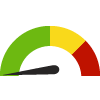





U.S. States
The distribution is based on data from 50 U.S. states and the District of Columbia.

US Value
(27.8%)
The regional value is compared to the national value.

Prior Value
(20.5%)
Prior Value compares a measured value with the previously measured value. Confidence intervals were not taken into account in determining the direction of the comparison.

Trend
This comparison measures the indicator’s values over multiple time periods.<br>The Mann-Kendall Test for Statistical Significance is used to evaluate the trend<br>over 4 to 10 periods of measure, subject to data availability and comparability.

HP 2030 Target
(25.5%)
State: Ohio Overcrowded Households
State: Ohio Overcrowded Households
1.4%
(2018-2022)
Compared to:



US Value
(3.4%)
The regional value is compared to the national value.

Trend
This comparison measures the indicator’s values over multiple time periods.<br>The Mann-Kendall Test for Statistical Significance is used to evaluate the trend<br>over 4 to 10 periods of measure, subject to data availability and comparability.
44.5%
(2018-2022)
Compared to:





U.S. States
The distribution is based on data from 50 U.S. states and the District of Columbia.

US Value
(49.9%)
The regional value is compared to the national value.

Trend
This comparison measures the indicator’s values over multiple time periods.<br>The Mann-Kendall Test for Statistical Significance is used to evaluate the trend<br>over 4 to 10 periods of measure, subject to data availability and comparability.

HP 2030 Target
(25.5%)
State: Ohio Severe Housing Problems
State: Ohio Severe Housing Problems
12.8%
(2016-2020)
Compared to:





U.S. States
The distribution is based on data from 50 U.S. states and the District of Columbia.

US Value
(16.7%)
The regional value is compared to the national value.

Prior Value
(13.1%)
Prior Value compares a measured value with the previously measured value. Confidence intervals were taken into account in determining the direction of the comparison.

Trend
This comparison measures the indicator’s values over multiple time periods.<br>The Mann-Kendall Test for Statistical Significance is used to evaluate the trend<br>over 4 to 10 periods of measure, subject to data availability and comparability.
State: Ohio Utilities Spending-to-Income Ratio
State: Ohio Utilities Spending-to-Income Ratio
6.4%
(2023)
Compared to:



U.S. States
The distribution is based on data from 50 U.S. states and the District of Columbia.

Prior Value
(6.5%)
Prior Value compares a measured value with the previously measured value. Confidence intervals were not taken into account in determining the direction of the comparison.
State: Ohio
Economy / Income
Value
Compared to:
State: Ohio Gender Pay Gap
State: Ohio Gender Pay Gap
$0.71
Cents on the dollar
(2022)
Compared to:




US Value
($0.73)
The regional value is compared to the national value.

Prior Value
($0.71)
Prior Value compares a measured value with the previously measured value. Confidence intervals were not taken into account in determining the direction of the comparison.

Trend
This comparison measures the indicator’s values over multiple time periods.<br>The Mann-Kendall Test for Statistical Significance is used to evaluate the trend<br>over 4 to 10 periods of measure, subject to data availability and comparability.
62.0%
(2021)
Compared to:


Prior Value
(61.6%)
Prior Value compares a measured value with the previously measured value. Confidence intervals were not taken into account in determining the direction of the comparison.
25.0%
(2021)
Compared to:


Prior Value
(24.5%)
Prior Value compares a measured value with the previously measured value. Confidence intervals were not taken into account in determining the direction of the comparison.
State: Ohio Income Inequality
State: Ohio Income Inequality
0.466
(2018-2022)
Compared to:




U.S. States
The distribution is based on data from 50 U.S. states and the District of Columbia.

US Value
(0.483)
The regional value is compared to the national value.

Trend
This comparison measures the indicator’s values over multiple time periods.<br>The Mann-Kendall Test for Statistical Significance is used to evaluate the trend<br>over 4 to 10 periods of measure, subject to data availability and comparability.
State: Ohio Median Household Income
State: Ohio Median Household Income
$66,990
(2018-2022)
Compared to:




U.S. States
The distribution is based on data from 50 U.S. states and the District of Columbia.

US Value
($75,149)
The regional value is compared to the national value.

Trend
This comparison measures the indicator’s values over multiple time periods.<br>The Mann-Kendall Test for Statistical Significance is used to evaluate the trend<br>over 4 to 10 periods of measure, subject to data availability and comparability.
State: Ohio Per Capita Income
State: Ohio Per Capita Income
$37,729
(2018-2022)
Compared to:




U.S. States
The distribution is based on data from 50 U.S. states and the District of Columbia.

US Value
($41,261)
The regional value is compared to the national value.

Trend
This comparison measures the indicator’s values over multiple time periods.<br>The Mann-Kendall Test for Statistical Significance is used to evaluate the trend<br>over 4 to 10 periods of measure, subject to data availability and comparability.
State: Ohio
Economy / Investment & Personal Finance
Value
Compared to:
State: Ohio Adults who Feel Overwhelmed by Financial Burdens
State: Ohio Adults who Feel Overwhelmed by Financial Burdens
37.9%
(2023)
Compared to:




U.S. States
The distribution is based on data from 50 U.S. states and the District of Columbia.

US Value
(37.6%)
The regional value is compared to the national value.

Prior Value
(45.1%)
Prior Value compares a measured value with the previously measured value. Confidence intervals were not taken into account in determining the direction of the comparison.
State: Ohio Households with a Savings Account
State: Ohio Households with a Savings Account
69.9%
(2023)
Compared to:




U.S. States
The distribution is based on data from 50 U.S. states and the District of Columbia.

US Value
(71.1%)
The regional value is compared to the national value.

Prior Value
(70.9%)
Prior Value compares a measured value with the previously measured value. Confidence intervals were not taken into account in determining the direction of the comparison.
State: Ohio
Economy / Poverty
Value
Compared to:
State: Ohio Children Living Below 200% of Poverty Level
State: Ohio Children Living Below 200% of Poverty Level
37.0%
(2022)
Compared to:




US Value
(36.5%)
The regional value is compared to the national value.

Prior Value
(37.8%)
Prior Value compares a measured value with the previously measured value. Confidence intervals were not taken into account in determining the direction of the comparison.

Trend
This comparison measures the indicator’s values over multiple time periods.<br>The Mann-Kendall Test for Statistical Significance is used to evaluate the trend<br>over 4 to 10 periods of measure, subject to data availability and comparability.
State: Ohio Children Living Below Poverty Level
State: Ohio Children Living Below Poverty Level
18.3%
(2018-2022)
Compared to:




U.S. States
The distribution is based on data from 50 U.S. states and the District of Columbia.

US Value
(16.7%)
The regional value is compared to the national value.

Trend
This comparison measures the indicator’s values over multiple time periods.<br>The Mann-Kendall Test for Statistical Significance is used to evaluate the trend<br>over 4 to 10 periods of measure, subject to data availability and comparability.
State: Ohio Families Living Below 200% of Poverty Level
State: Ohio Families Living Below 200% of Poverty Level
22.7%
(2022)
Compared to:





U.S. States
The distribution is based on data from 50 U.S. states and the District of Columbia.

US Value
(22.5%)
The regional value is compared to the national value.

Prior Value
(22.4%)
Prior Value compares a measured value with the previously measured value. Confidence intervals were not taken into account in determining the direction of the comparison.

Trend
This comparison measures the indicator’s values over multiple time periods.<br>The Mann-Kendall Test for Statistical Significance is used to evaluate the trend<br>over 4 to 10 periods of measure, subject to data availability and comparability.
State: Ohio Families Living Below Poverty Level
State: Ohio Families Living Below Poverty Level
9.3%
(2018-2022)
Compared to:




U.S. States
The distribution is based on data from 50 U.S. states and the District of Columbia.

US Value
(8.8%)
The regional value is compared to the national value.

Trend
This comparison measures the indicator’s values over multiple time periods.<br>The Mann-Kendall Test for Statistical Significance is used to evaluate the trend<br>over 4 to 10 periods of measure, subject to data availability and comparability.
State: Ohio Households Living Below Poverty Level
State: Ohio Households Living Below Poverty Level
13.0%
(2021)
Compared to:


Prior Value
(13.8%)
Prior Value compares a measured value with the previously measured value. Confidence intervals were not taken into account in determining the direction of the comparison.
State: Ohio People 65+ Living Below 200% of Poverty Level
State: Ohio People 65+ Living Below 200% of Poverty Level
28.7%
(2022)
Compared to:




US Value
(28.0%)
The regional value is compared to the national value.

Prior Value
(26.9%)
Prior Value compares a measured value with the previously measured value. Confidence intervals were not taken into account in determining the direction of the comparison.

Trend
This comparison measures the indicator’s values over multiple time periods.<br>The Mann-Kendall Test for Statistical Significance is used to evaluate the trend<br>over 4 to 10 periods of measure, subject to data availability and comparability.
State: Ohio People 65+ Living Below Poverty Level
State: Ohio People 65+ Living Below Poverty Level
9.1%
(2018-2022)
Compared to:




U.S. States
The distribution is based on data from 50 U.S. states and the District of Columbia.

US Value
(10.0%)
The regional value is compared to the national value.

Trend
This comparison measures the indicator’s values over multiple time periods.<br>The Mann-Kendall Test for Statistical Significance is used to evaluate the trend<br>over 4 to 10 periods of measure, subject to data availability and comparability.
State: Ohio People 65+ Living Below Poverty Level (Count)
State: Ohio People 65+ Living Below Poverty Level (Count)
181,093
People
(2018-2022)
Compared to:


Trend
This comparison measures the indicator’s values over multiple time periods.<br>The Mann-Kendall Test for Statistical Significance is used to evaluate the trend<br>over 4 to 10 periods of measure, subject to data availability and comparability.
State: Ohio People Living 200% Above Poverty Level
State: Ohio People Living 200% Above Poverty Level
70.4%
(2018-2022)
Compared to:




U.S. States
The distribution is based on data from 50 U.S. states and the District of Columbia.

US Value
(71.2%)
The regional value is compared to the national value.

Trend
This comparison measures the indicator’s values over multiple time periods.<br>The Mann-Kendall Test for Statistical Significance is used to evaluate the trend<br>over 4 to 10 periods of measure, subject to data availability and comparability.
State: Ohio People Living Below 200% of Poverty Level
State: Ohio People Living Below 200% of Poverty Level
29.3%
(2022)
Compared to:





U.S. States
The distribution is based on data from 50 U.S. states and the District of Columbia.

US Value
(28.4%)
The regional value is compared to the national value.

Prior Value
(29.1%)
Prior Value compares a measured value with the previously measured value. Confidence intervals were not taken into account in determining the direction of the comparison.

Trend
This comparison measures the indicator’s values over multiple time periods.<br>The Mann-Kendall Test for Statistical Significance is used to evaluate the trend<br>over 4 to 10 periods of measure, subject to data availability and comparability.
State: Ohio People Living Below Poverty Level
State: Ohio People Living Below Poverty Level
13.3%
(2018-2022)
Compared to:





U.S. States
The distribution is based on data from 50 U.S. states and the District of Columbia.

US Value
(12.5%)
The regional value is compared to the national value.

Trend
This comparison measures the indicator’s values over multiple time periods.<br>The Mann-Kendall Test for Statistical Significance is used to evaluate the trend<br>over 4 to 10 periods of measure, subject to data availability and comparability.

HP 2030 Target
(8.0%)
State: Ohio Young Children Living Below Poverty Level
State: Ohio Young Children Living Below Poverty Level
20.7%
(2018-2022)
Compared to:




U.S. States
The distribution is based on data from 50 U.S. states and the District of Columbia.

US Value
(18.1%)
The regional value is compared to the national value.

Trend
This comparison measures the indicator’s values over multiple time periods.<br>The Mann-Kendall Test for Statistical Significance is used to evaluate the trend<br>over 4 to 10 periods of measure, subject to data availability and comparability.
State: Ohio Youth not in School or Working
State: Ohio Youth not in School or Working
1.9%
(2018-2022)
Compared to:




U.S. States
The distribution is based on data from 50 U.S. states and the District of Columbia.

US Value
(1.8%)
The regional value is compared to the national value.

Trend
This comparison measures the indicator’s values over multiple time periods.<br>The Mann-Kendall Test for Statistical Significance is used to evaluate the trend<br>over 4 to 10 periods of measure, subject to data availability and comparability.
State: Ohio
Education / Childcare & Early Childhood Education
Value
Compared to:
State: Ohio Child Care Centers
State: Ohio Child Care Centers
8.0
Per 1,000 population under age 5
(2022)
Compared to:



US Value
(7.0)
The regional value is compared to the national value.

Prior Value
(7.4)
Prior Value compares a measured value with the previously measured value. Confidence intervals were not taken into account in determining the direction of the comparison.
7.8%
(2023)
Compared to:



U.S. States
The distribution is based on data from 50 U.S. states and the District of Columbia.

Prior Value
(7.9%)
Prior Value compares a measured value with the previously measured value. Confidence intervals were not taken into account in determining the direction of the comparison.
State: Ohio Home Child Care Spending-to-Income Ratio
State: Ohio Home Child Care Spending-to-Income Ratio
3.4%
(2023)
Compared to:



U.S. States
The distribution is based on data from 50 U.S. states and the District of Columbia.

Prior Value
(3.5%)
Prior Value compares a measured value with the previously measured value. Confidence intervals were not taken into account in determining the direction of the comparison.
State: Ohio
Education / Educational Attainment
Value
Compared to:
State: Ohio College Tuition Spending-to-Income Ratio
State: Ohio College Tuition Spending-to-Income Ratio
13.4%
(2023)
Compared to:



U.S. States
The distribution is based on data from 50 U.S. states and the District of Columbia.

Prior Value
(13.6%)
Prior Value compares a measured value with the previously measured value. Confidence intervals were not taken into account in determining the direction of the comparison.
State: Ohio Community Spending on Education
State: Ohio Community Spending on Education
2.2%
(2023)
Compared to:



US Value
(2.4%)
The regional value is compared to the national value.

Prior Value
(2.2%)
Prior Value compares a measured value with the previously measured value. Confidence intervals were not taken into account in determining the direction of the comparison.
State: Ohio People 25+ with a Bachelor's Degree or Higher
State: Ohio People 25+ with a Bachelor's Degree or Higher
30.4%
(2018-2022)
Compared to:




U.S. States
The distribution is based on data from 50 U.S. states and the District of Columbia.

US Value
(34.3%)
The regional value is compared to the national value.

Trend
This comparison measures the indicator’s values over multiple time periods.<br>The Mann-Kendall Test for Statistical Significance is used to evaluate the trend<br>over 4 to 10 periods of measure, subject to data availability and comparability.
State: Ohio People 25+ with a High School Diploma or Higher
State: Ohio People 25+ with a High School Diploma or Higher
91.4%
(2018-2022)
Compared to:




U.S. States
The distribution is based on data from 50 U.S. states and the District of Columbia.

US Value
(89.1%)
The regional value is compared to the national value.

Trend
This comparison measures the indicator’s values over multiple time periods.<br>The Mann-Kendall Test for Statistical Significance is used to evaluate the trend<br>over 4 to 10 periods of measure, subject to data availability and comparability.
State: Ohio Student Loan Spending-to-Income Ratio
State: Ohio Student Loan Spending-to-Income Ratio
4.9%
(2023)
Compared to:



U.S. States
The distribution is based on data from 50 U.S. states and the District of Columbia.

Prior Value
(5.0%)
Prior Value compares a measured value with the previously measured value. Confidence intervals were not taken into account in determining the direction of the comparison.
1.7%
(2023)
Compared to:



U.S. States
The distribution is based on data from 50 U.S. states and the District of Columbia.

Prior Value
(1.7%)
Prior Value compares a measured value with the previously measured value. Confidence intervals were not taken into account in determining the direction of the comparison.
State: Ohio
Education / School Environment
Value
Compared to:
State: Ohio Student-to-Teacher Ratio
State: Ohio Student-to-Teacher Ratio
16.4
Students per teacher
(2022-2023)
Compared to:





U.S. States
The distribution is based on data from 50 U.S. states and the District of Columbia.

US Value
(15.4)
The regional value is compared to the national value.

Prior Value
(16.9)
Prior Value compares a measured value with the previously measured value. Confidence intervals were not taken into account in determining the direction of the comparison.

Trend
This comparison measures the indicator’s values over multiple time periods.<br>The Mann-Kendall Test for Statistical Significance is used to evaluate the trend<br>over 4 to 10 periods of measure, subject to data availability and comparability.
State: Ohio
Education / Student Performance K-12
Value
Compared to:
58.9%
(2022-2023)
Compared to:



Prior Value
(62.5%)
Prior Value compares a measured value with the previously measured value. Confidence intervals were not taken into account in determining the direction of the comparison.

Trend
This comparison measures the indicator’s values over multiple time periods.<br>The Mann-Kendall Test for Statistical Significance is used to evaluate the trend<br>over 4 to 10 periods of measure, subject to data availability and comparability.
State: Ohio 4th Grade Students Proficient in Math
State: Ohio 4th Grade Students Proficient in Math
66.8%
(2022-2023)
Compared to:



Prior Value
(63.6%)
Prior Value compares a measured value with the previously measured value. Confidence intervals were not taken into account in determining the direction of the comparison.

Trend
This comparison measures the indicator’s values over multiple time periods.<br>The Mann-Kendall Test for Statistical Significance is used to evaluate the trend<br>over 4 to 10 periods of measure, subject to data availability and comparability.
57.5%
(2022-2023)
Compared to:



Prior Value
(52.7%)
Prior Value compares a measured value with the previously measured value. Confidence intervals were not taken into account in determining the direction of the comparison.

Trend
This comparison measures the indicator’s values over multiple time periods.<br>The Mann-Kendall Test for Statistical Significance is used to evaluate the trend<br>over 4 to 10 periods of measure, subject to data availability and comparability.
State: Ohio 8th Grade Students Proficient in Math
State: Ohio 8th Grade Students Proficient in Math
46.4%
(2022-2023)
Compared to:



Prior Value
(43.0%)
Prior Value compares a measured value with the previously measured value. Confidence intervals were not taken into account in determining the direction of the comparison.

Trend
This comparison measures the indicator’s values over multiple time periods.<br>The Mann-Kendall Test for Statistical Significance is used to evaluate the trend<br>over 4 to 10 periods of measure, subject to data availability and comparability.
State: Ohio High School Graduation
State: Ohio High School Graduation
91.6%
(2021-2022)
Compared to:





US Value
(86.5% in 2020)
The regional value is compared to the national value. The source for the national value is National Center for Education Statistics

Prior Value
(91.4%)
Prior Value compares a measured value with the previously measured value. Confidence intervals were not taken into account in determining the direction of the comparison.

Trend
This comparison measures the indicator’s values over multiple time periods.<br>The Mann-Kendall Test for Statistical Significance is used to evaluate the trend<br>over 4 to 10 periods of measure, subject to data availability and comparability.

HP 2030 Target
(90.7%)
State: Ohio
Environmental Health / Air
Value
Compared to:
State: Ohio Recognized Carcinogens Released into Air
State: Ohio Recognized Carcinogens Released into Air
2,179,554
Pounds
(2022)
Compared to:



Prior Value
(2,156,616)
Prior Value compares a measured value with the previously measured value. Confidence intervals were not taken into account in determining the direction of the comparison.

Trend
This comparison measures the indicator’s values over multiple time periods.<br>The Mann-Kendall Test for Statistical Significance is used to evaluate the trend<br>over 4 to 10 periods of measure, subject to data availability and comparability.
State: Ohio
Environmental Health / Built Environment
Value
Compared to:
State: Ohio Access to Exercise Opportunities
State: Ohio Access to Exercise Opportunities
83.9%
(2024)
Compared to:




U.S. States
The distribution is based on data from 50 U.S. states and the District of Columbia.

US Value
(84.1%)
The regional value is compared to the national value.

Prior Value
(83.8%)
Prior Value compares a measured value with the previously measured value. Confidence intervals were not taken into account in determining the direction of the comparison.
State: Ohio Access to Parks
State: Ohio Access to Parks
59.6%
(2020)
Compared to:


Prior Value
(38.0%)
Prior Value compares a measured value with the previously measured value. Confidence intervals were not taken into account in determining the direction of the comparison.
State: Ohio Food Environment Index
State: Ohio Food Environment Index
7.0
(2024)
Compared to:





U.S. States
The distribution is based on data from 50 U.S. states and the District of Columbia.

US Value
(7.7)
The regional value is compared to the national value.

Prior Value
(6.8)
Prior Value compares a measured value with the previously measured value. Confidence intervals were not taken into account in determining the direction of the comparison.

Trend
This comparison measures the indicator’s values over multiple time periods.<br>The Mann-Kendall Test for Statistical Significance is used to evaluate the trend<br>over 4 to 10 periods of measure, subject to data availability and comparability.
State: Ohio Liquor Store Density
State: Ohio Liquor Store Density
5.6
Stores per 100,000 population
(2021)
Compared to:





U.S. States
The distribution is based on data from 50 U.S. states and the District of Columbia.

US Value
(10.7)
The regional value is compared to the national value.

Prior Value
(5.7)
Prior Value compares a measured value with the previously measured value. Confidence intervals were not taken into account in determining the direction of the comparison.

Trend
This comparison measures the indicator’s values over multiple time periods.<br>The Mann-Kendall Test for Statistical Significance is used to evaluate the trend<br>over 4 to 10 periods of measure, subject to data availability and comparability.
State: Ohio Proximity to Highways
State: Ohio Proximity to Highways
0.1%
(2020)
Compared to:


Prior Value
(0.1%)
Prior Value compares a measured value with the previously measured value. Confidence intervals were not taken into account in determining the direction of the comparison.
State: Ohio
Environmental Health / Toxins & Contaminants
Value
Compared to:
0.6%
(2021)
Compared to:



Prior Value
(0.5%)
Prior Value compares a measured value with the previously measured value. Confidence intervals were not taken into account in determining the direction of the comparison.

Trend
This comparison measures the indicator’s values over multiple time periods.<br>The Mann-Kendall Test for Statistical Significance is used to evaluate the trend<br>over 4 to 10 periods of measure, subject to data availability and comparability.
840
Children
(2021)
Compared to:



Prior Value
(768)
Prior Value compares a measured value with the previously measured value. Confidence intervals were not taken into account in determining the direction of the comparison.

Trend
This comparison measures the indicator’s values over multiple time periods.<br>The Mann-Kendall Test for Statistical Significance is used to evaluate the trend<br>over 4 to 10 periods of measure, subject to data availability and comparability.
2.0%
(2021)
Compared to:



Prior Value
(1.9%)
Prior Value compares a measured value with the previously measured value. Confidence intervals were not taken into account in determining the direction of the comparison.

Trend
This comparison measures the indicator’s values over multiple time periods.<br>The Mann-Kendall Test for Statistical Significance is used to evaluate the trend<br>over 4 to 10 periods of measure, subject to data availability and comparability.
2,955
Children
(2021)
Compared to:



Prior Value
(2,776)
Prior Value compares a measured value with the previously measured value. Confidence intervals were not taken into account in determining the direction of the comparison.

Trend
This comparison measures the indicator’s values over multiple time periods.<br>The Mann-Kendall Test for Statistical Significance is used to evaluate the trend<br>over 4 to 10 periods of measure, subject to data availability and comparability.
State: Ohio Houses Built Prior to 1950
State: Ohio Houses Built Prior to 1950
25.1%
(2018-2022)
Compared to:




U.S. States
The distribution is based on data from 50 U.S. states and the District of Columbia.

US Value
(16.7%)
The regional value is compared to the national value.

Trend
This comparison measures the indicator’s values over multiple time periods.<br>The Mann-Kendall Test for Statistical Significance is used to evaluate the trend<br>over 4 to 10 periods of measure, subject to data availability and comparability.
State: Ohio PBT Released
State: Ohio PBT Released
1,034,908
Pounds
(2022)
Compared to:



Prior Value
(1,060,574)
Prior Value compares a measured value with the previously measured value. Confidence intervals were not taken into account in determining the direction of the comparison.

Trend
This comparison measures the indicator’s values over multiple time periods.<br>The Mann-Kendall Test for Statistical Significance is used to evaluate the trend<br>over 4 to 10 periods of measure, subject to data availability and comparability.
State: Ohio
Environmental Health / Weather & Climate
Value
Compared to:
State: Ohio Daily Dose of UV Irradiance
State: Ohio Daily Dose of UV Irradiance
3,384.0
Joule per square meter
(2020)
Compared to:



Prior Value
(3,294.0)
Prior Value compares a measured value with the previously measured value. Confidence intervals were not taken into account in determining the direction of the comparison.

Trend
This comparison measures the indicator’s values over multiple time periods.<br>The Mann-Kendall Test for Statistical Significance is used to evaluate the trend<br>over 4 to 10 periods of measure, subject to data availability and comparability.


